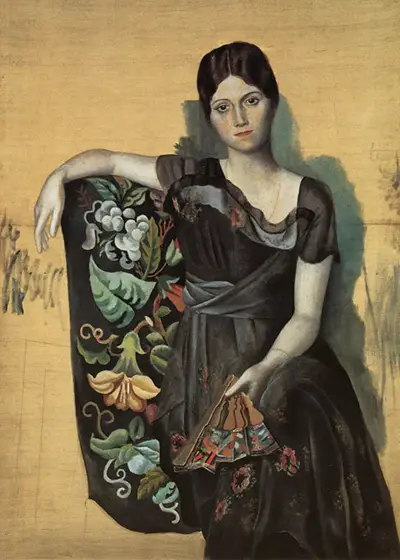The artist reverts to his earlier styles in order to effectively combine romance and art.
As a ballerina, Olga would always be an aesthetically suitable choice, and Picasso always retained an eye for pretty young women. The clearest example of this would, of course, be Marie-Thérèse Walter as portrayed in The Dream.
Olga appears again in multiple artworks, such as the well respected Portrait of Olga, 1920.
As with most of his portraits, Pablo uses a fairly unobtrusive background in neutral tones to help build the focus towards his model.
His relationship with Olga, and the new connections to higher society that it brought, had a strong influence on Picasso over many years. His perspective may have been altered in some ways, but he would always retain a stronger love of those more in need.
Pablo Picasso was in Montrouge, 1917 at the time of this painting. It is classified as part of his Neoclassical period and is now owned by the Musee Picasso in Paris. As suggested by its name, this institution holds one of the finest collection of Picasso original artworks in the world, with a breadth of mediums including drawings, paintings, ceramics and sculptures.
Art historians believe that the style used by Picasso in this painting was heavily influenced by the work of Ingres, a style which he developed during the First World War, having chosen not to serve as a soldier. The art world will forever be thankful for that decision, considering the destruction involved in "The Great War" which sadly took many other famous artists with it.
It is believed that Pablo Picasso met Olga Khokhlova through a key contact, Sergei Diaghilev's Ballets Russes. This dancer would inspire a new, meticulous, approach to his work which is displayed within this portrait. This significant portrait has been researched in great detail due to both the quality of the artwork and also the importance of Picasso's relationship with this young dancer.

